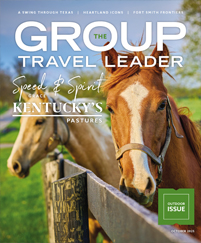At the Lincoln Memorial on the National Mall in Washington, D.C., soaring Doric columns flank the entrance to the weighty marble statue of a solemn, seated President Abraham Lincoln. On the side of a back road in a backwater on the Mississippi Delta, a crumbling, collapsing, vine-clad building is where a teenage boy went to buy candy and, as a result, was brutally murdered.
Whether it’s a grand monument or the remnants of a bygone building, or a current school, a former motel or an arching bridge, these sites have witnessed some of the most heartrending, inspiring and galvanizing moments in civil rights history and of the American civil rights movement.
Little Rock Central High School National Historic Site
Little Rock, Arkansas
When the Little Rock Nine tried to enter the previously all-white Central High School in Little Rock, Arkansas, on September 4, 1957, they were met by a mob of angry segregationists, crowds of press and National Guard troops ordered by the governor to keep them out.
By the end of the month, the same nine students were once again met by National Guard troops, this time under the order of President Dwight Eisenhower to protect them as they entered the school.
The Little Rock Central High School National Historic Site marked the 60th anniversary of the integration in September 2017 with eight surviving Little Rock Nine students in attendance.
Many visitors don’t realize that the National Historic Site is still an active school and that access to the building is limited, said chief of interpretation David Kilton. However, the site also has a visitors center, a commemorative garden and a historically preserved Mobil gas station where the press called in their stories on the pay phone.
The site is working with the neighboring church to install a bench in the same spot where student Elizabeth Eckford sat, alone, surrounded by press, which drew the attention of the segregationists. On the corner is Ponder’s Drug Store, where she “tried to seek shelter from the crowd that day and was turned away,” he said.
Groups should arrange guided tours at least two weeks in advance, and “rangers will help guests walk in those footsteps and see that story,” Kilton said. Tours are generally available at 9 a.m. and 1 p.m., and can include the foyer, the auditorium and the cafeteria if the school is open.
Emmett Till Marker on the Mississippi Freedom Trail
Money, Mississippi
Of all the markers on the Mississippi Freedom Trail, which was created in 2011, the Emmett Till marker in Money, Mississippi, probably draws the most visitors. The teenager’s brutal and senseless murder in 1955 shocked not only America but also the world as media spread the news of his death around the globe.
“The lynching of Emmett Till helped to really galvanize the civil rights movement,” said Leslie-Burl McLemore, Mississippi Freedom Trail Task Force chairman. “It helped to put civil rights on the forefront of the American dialogue. It provided a sense of unity and a sense of organization that hadn’t been present before.”
There isn’t much at the site — Bryant Grocery is a crumbling, vine-covered building — but the marker tells Till’s story, which still resonates with visitors.
Till lived in Chicago and was visiting family in August 1955 when he went to Bryant Grocery to buy candy. Shopkeeper Carolyn Bryant claimed that Till flirted with her. Several nights later, Bryant’s husband and his half brother kidnapped Till, beat and mutilated him, shot him in the head and sunk his body in the Tallahatchie River. In a book published in 2017, Bryant admitted her claims were false.
Till’s mother demanded a public funeral with an open casket so the world could see what had been done to her son. His killers were tried for murder and acquitted by an all-white, all-male jury, but the two men later confessed in a tell-all magazine article.
After vandals destroyed Till’s marker in summer 2017, the state replaced it and held a rededication ceremony. But the fact that it was targeted “points out how much further we have to go and how much more work we need to do in terms of ridding ourselves of racism and teaching American history,” McLemore said.









